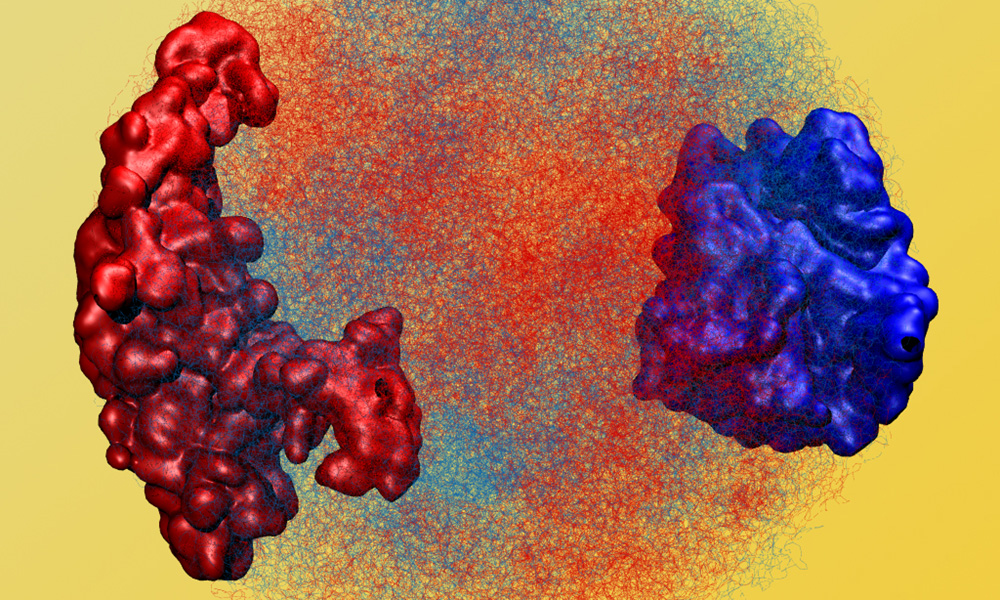
How chromosome structure influences development
EMBL researchers explore the interaction between DNA organisation and gene expression in the early embryo

Scientists in the Heard group at EMBL Heidelberg have investigated the three-dimensional organisation of DNA in early embryos. They discovered that, during the first stages of an embryo’s life, hundreds of regions of the genome are active on only one copy of a chromosome – either the one received from the mother or the father – but almost never on both at the same time. Their findings are reported in Nature.
A highly organised bundle
In each of our cells, we have around two metres of DNA, packed into a nucleus less than a hundredth of a millimetre across – ten times smaller than the width of a human hair. DNA winds around proteins called histones, which help compress the long thread into a dense and manageable shape: our chromosomes. This packaging is not random, but highly organised, and plays an important role in regulating the expression of our genes, so our cells can function properly.
During the very first moments of our life, the genetic material of two germ cells – egg and sperm – is merged to create the first cells that will multiply and form our body. Once the germ cells merge, their chromosomes need to be reorganised. Until now, it was largely unknown how this happened.
Parental domains and early development
In this study, the Heard group at EMBL Heidelberg adapted a technique developed in the lab of Peter Fraser at Florida State University, to study the structure of chromosomes in the first stages of mouse embryo development. The method used by the Heard Group is called single-cell high-throughput chromosome conformation capture (single-cell Hi-C), and is used to study the three-dimensional structure of genomes and the links between this structure and genome activity. This is the first time a complete map of paternal and maternal chromosome organisation during early mouse development has been generated at single-cell resolution in such a large number of cells – hundreds in this case.
The scientists were surprised to discover that the two parental genomes were organised completely differently. “Some regions of the genome form domains, like balls of DNA yarn,” explains Samuel Collombet, a postdoc in the Heard group and first author of the study. “Your chromosomes come in pairs – one from each parent – and most of the time the domains are basically the same on each copy in a pair.”
In the early stages of the embryo, however – when it is made of one to four cells – most of the domains are formed on the maternal genome, a few on the paternal one, and almost none on corresponding parts of both at the same time. In other words, most regions show specific 3D organisation on only one copy of the two parental chromosomes. In later stages, when the embryo is made of eight cells, these parental domains disappear, and the classical domains that are present on both chromosomes begin to form.
The parental domains in the early embryo proved to be silent – the genes inside this organised bundle were not expressed. Since only one copy of each chromosome region is organised, only one copy of each gene is silent, while the copy from the other parent is expressed. “We already knew that some genes, a few tens, are expressed only on the maternal genome during early development,” says Samuel. “But what we’ve now discovered is that hundreds of regions in the genome behave this way.”
A map of chromosome organisation
These regions contain many genes that are very important for early development, such as Xist – a gene that controls the inactivation of the X chromosome in female mammals, which is a key topic of research in the Heard group. Since females have two X chromosomes, one of them is deactivated to prevent them from getting a harmful double dose of X chromosome gene products, as compared to males. “Other genes have to be kept silent or expressed at a low level to allow the embryo to develop, and this might be achieved by inheriting a silent copy,” says Samuel.
Based on their results, scientists in the Heard group can now study the mechanism by which parental domains control gene expression, and in particular expression of Xist, which the group is already studying extensively. Samuel explains that this is the first time they’ve been able to study the 3D organisation of the X chromosome and link it to gene expression during embryo development. “It’s also the first time anyone has shown that we can follow embryo development by looking only at chromosome organisation in single cells,” he says. “This raises new questions about the role of chromosome organisation in determining how cells specialise during development.”
The study provides a map of chromosome organisation in the mouse genome that can now be used by other research groups, as Samuel explains: “The results also provide hundreds of candidates for new genes that could be important for development, that we and others will want to study.”


